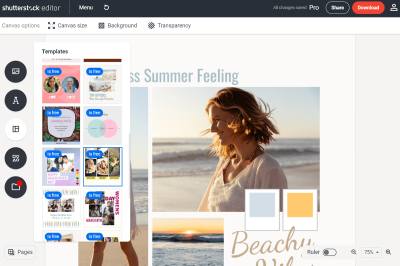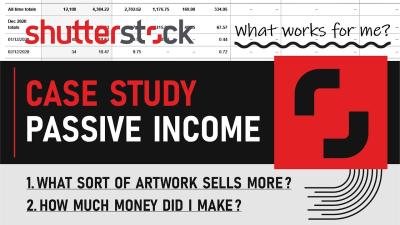Thinking about using Shutterstock images for your project? You’re not alone—it’s a popular choice for creatives, marketers, and businesses alike. But before you dive in, it’s important to understand how their pricing works. Shutterstock offers a vast library of high-quality images, but the cost can vary quite a bit depending on several factors. In this post, we’ll break down the basics of
Factors That Influence Shutterstock Image Prices
When it comes to Shutterstock images, a lot of different things can impact how much you’ll pay. Let’s walk through the main factors that influence the cost:
- Image Type and Resolution: High-resolution images or those with specific licensing options tend to cost more. The resolution affects the quality and usability for larger prints or commercial use.
- License Type: Shutterstock offers different licensing options—standard and extended. Standard licenses are usually cheaper and suitable for most uses, but if you need broader rights, such as for merchandise or large-scale printing, extended licenses will add to the cost.
- Pricing Plans and Subscription Models: Shutterstock provides various plans—pay-per-image, monthly subscriptions, or enterprise packages. The more images you plan to download, the cheaper each image typically becomes with a subscription.
- Image Popularity and Demand: Popular or trending images can sometimes be priced higher due to higher demand, especially if licensed individually rather than through a subscription.
- Usage Scope: How you plan to use the image influences the price. Commercial campaigns, billboards, or products for resale will usually require extended licenses, which are more expensive.
Understanding these factors can help you estimate costs better and choose the right licensing options for your needs. Whether you’re a small blogger or a large corporation, knowing what affects the price can save you money and ensure you get the right image for your project without surprises.
Pricing Options and Subscription Plans
When it comes to purchasing images on Shutterstock, one of the first things you’ll notice is the variety of pricing options and subscription plans available. Shutterstock aims to cater to different needs, whether you’re a casual user, a small business, or a large enterprise. So, let’s break down what’s on offer.
Pay-As-You-Go Credits: This option is perfect if you need a handful of images from time to time. You buy credits upfront, and each image costs a certain number of credits depending on its size and resolution. For example, a standard image might cost 3 credits, while a premium or high-resolution image could be 10 credits. Credits don’t expire quickly, giving you flexibility to use them when you need.
Subscription Plans: If you’re a regular user, subscriptions usually offer better value. These plans typically include a set number of images you can download each day, week, or month. Some of the common options include:
- Standard Monthly Subscription: Usually allows for 10 to 350 images per month, with a cap on daily downloads. It’s great for bloggers, marketers, or small teams.
- Annual Plans: Pay upfront for a whole year, often at a discounted rate, with similar image limits as monthly plans.
- On-Demand Plans: These are flexible packages where you buy a set number of downloads without a fixed schedule, ideal if your needs fluctuate.
Pricing Tiers: Shutterstock’s pricing varies based on the plan and image size. Smaller images or web-resolution images are cheaper, while high-res images suitable for print or large-scale projects cost more. Always check the specifics of each plan to ensure it fits your needs and budget.
Additional Costs & Considerations: – Extended Licenses: If you plan to use images in products for resale, like merchandise or print-on-demand items, you might need an extended license, which costs more. – Credits Purchase: Sometimes, buying credits directly can be more flexible if your download needs vary from month to month. – Bulk Discounts: For large volume purchases, Shutterstock often offers custom quotes or discounts.
Understanding these options helps you choose a plan that balances your budget with your project requirements. Remember to consider your typical download volume and the level of image quality you need — sometimes, investing a little more upfront can save you money in the long run!
How to Buy Shutterstock Images and What to Expect
Ready to get your hands on that perfect image? Buying from Shutterstock is straightforward, but knowing what to expect can make the process even smoother. Here’s a step-by-step guide:
Step 1: Create an Account First things first, sign up on Shutterstock’s website. You can choose a plan during registration or explore their pay-as-you-go options later. Setting up an account also allows you to save favorite images and manage your subscriptions easily.
Step 2: Search for Images Use the search bar to find images by keywords, categories, or even upload your own sample image for visual similarity. Filters like orientation, color, image type, and size help narrow down your options so you find exactly what you need faster.
Step 3: Select Your Image Once you find an image you like, click on it for a detailed preview. Here, you’ll see details like resolution, licensing options, and price. Make sure to choose the right size and license type before adding it to your cart.
Step 4: Choose Your Purchase Option Depending on your plan, you can either add credits to your account, subscribe to a plan, or buy the image outright with a pay-as-you-go credit pack. Follow the prompts to proceed to checkout.
Step 5: Complete the Payment Shutterstock offers multiple payment methods, including credit/debit cards and PayPal. After entering your payment details, confirm your purchase. You’ll then receive access to download the image immediately or as specified by your plan.
What to Expect After Purchase: – Instant Download: Usually, you’ll get a direct link to download your image in the resolution you selected. – Licensing Terms: Make sure to review the license details. Standard licenses cover most web and print uses but have limits on distribution and product resale. – Usage Rights: Once purchased, you can typically use the image as per the license agreement, which often includes usage in websites, social media, presentations, and print materials. – Limitations: Be aware of the restrictions. For example, you can’t resell the image as-is or use it in a way that violates copyright or trademark laws.
Buying Shutterstock images is designed to be user-friendly, but taking a moment to understand the process can help you avoid surprises. Always double-check your license choices to ensure your usage is covered, and keep a copy of your purchase confirmation for your records. Happy hunting for that perfect image!
Tips for Getting the Best Value When Purchasing Shutterstock Images
When it comes to buying Shutterstock images, it’s easy to feel like you’re just throwing money at pretty pictures. But with a few smart strategies, you can make sure you’re getting the most bang for your buck. Here are some tips to help you maximize your investment:
Understand Your Needs
Before browsing, think about what you really need. Are you after a high-resolution image for print, or a smaller one for web use? Clarifying this helps you avoid overspending on larger sizes than necessary. Also, consider the style and subject matter—narrowing your focus saves time and money.
Use Subscription Plans Wisely
Shutterstock offers various plans, from on-demand images to subscriptions. If you’re planning to purchase multiple images regularly, a subscription can be more economical. Just make sure to choose a plan that matches your typical usage to prevent paying for unused downloads.
Leverage Search Filters
Proper use of search filters can save you time and help you find the perfect image faster. Filter by orientation, color, image type, or even the number of people in the shot. This streamlines your search and reduces the need to browse through countless options.
Look for Free or Discounted Content
Sometimes Shutterstock runs promotions or offers free images for new users. Keep an eye out for discounts or bundles, especially during special sales events. Additionally, exploring their curated collections can sometimes lead to finding great images at a lower cost.
Consider Subscription Alternatives
- Monthly Subscription: Ideal if you need a steady stream of images.
- On-Demand Packs: Pay per image if your needs are sporadic.
- Extended Licenses: Only purchase these when necessary, such as for commercial campaigns or large prints.
Respect Licensing Terms
Getting the right license ensures you won’t face legal issues down the line—and that you’re paying for what you need. For most buyers, a standard license suffices, but if you need to modify images or use them in large campaigns, consider an extended license.
Conclusion and Final Thoughts on Shutterstock Image Costs
Understanding the costs associated with Shutterstock images can help you make smarter purchasing decisions and get the best value for your money. Remember, the price isn’t just about the number on the tag—it’s about the quality, licensing, and how well the image fits your project.
Whether you’re a blogger, marketer, or designer, there are ways to optimize your spending. Using subscriptions wisely, searching efficiently, and respecting licensing terms can all lead to cost-effective image sourcing. Don’t forget, investing in high-quality visuals can significantly enhance your message and credibility—so it’s worth finding that sweet spot between quality and affordability.
At the end of the day, being informed and strategic will help you navigate Shutterstock’s pricing structure confidently. Happy buying, and may your visuals always be just what you need!


